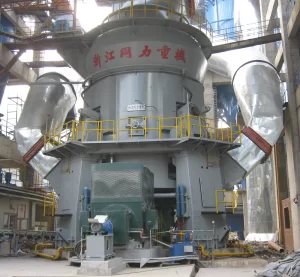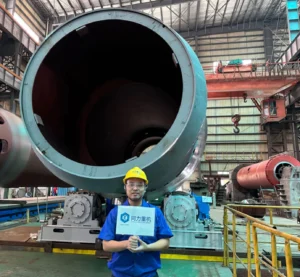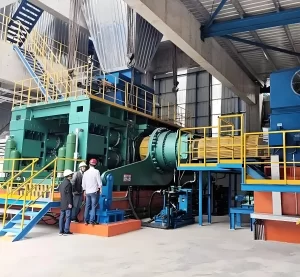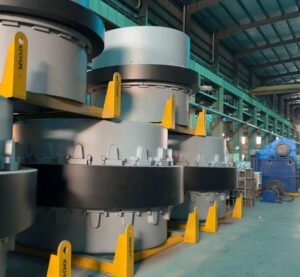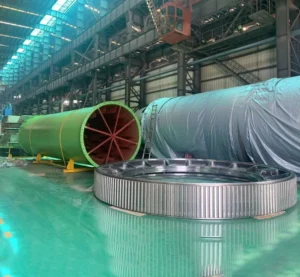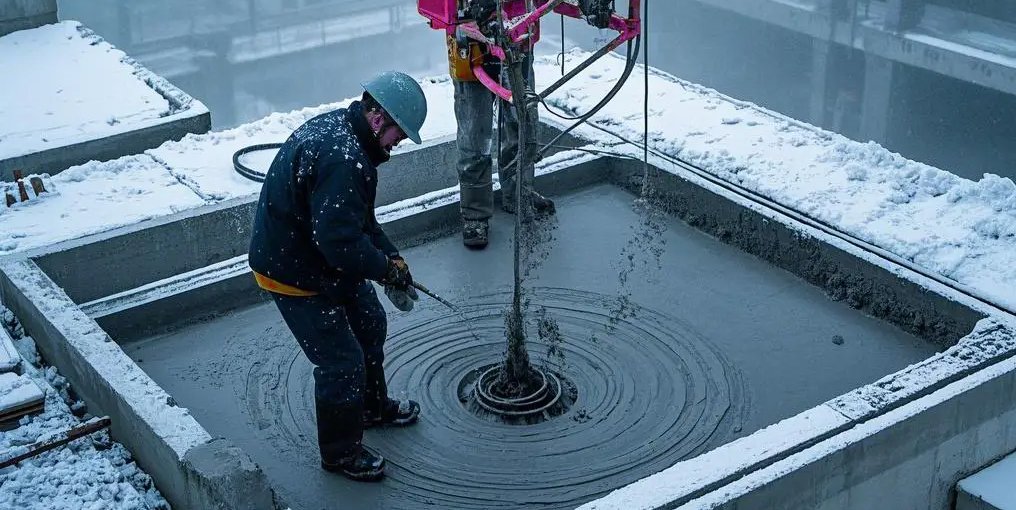
The hydration of cement is temperature and time dependent. The higher the temperature, the faster the reaction occurs. Over time, strength increases as the hydration reaction continues. Accelerators are catalysts for the hydration reaction. They are additives used to shorten the setting time and improve compressive strength by speeding up or shortening the normal reaction between cement and water, thereby reducing the cement's thickening time and increasing the early strength required for the cement paste to become a hardened body. A cement accelerator is an admixture used in concrete, mortar, plaster or screed. The addition of an accelerator speeds up the setting time so that the curing process begins earlier. This allows concrete to be laid in winter with less risk of frost damage. If the concrete does not reach a strength of 500 pounds per square inch (3.4 MPa) before freezing, it will damage the concrete. Understanding the different types of accelerators, their applications, and the proper amount is key to achieving the desired properties of cement concrete mixes. This article will explore these elements in detail, covering both the practical and technical aspects of accelerator admixtures.
Types of cement concrete accelerators
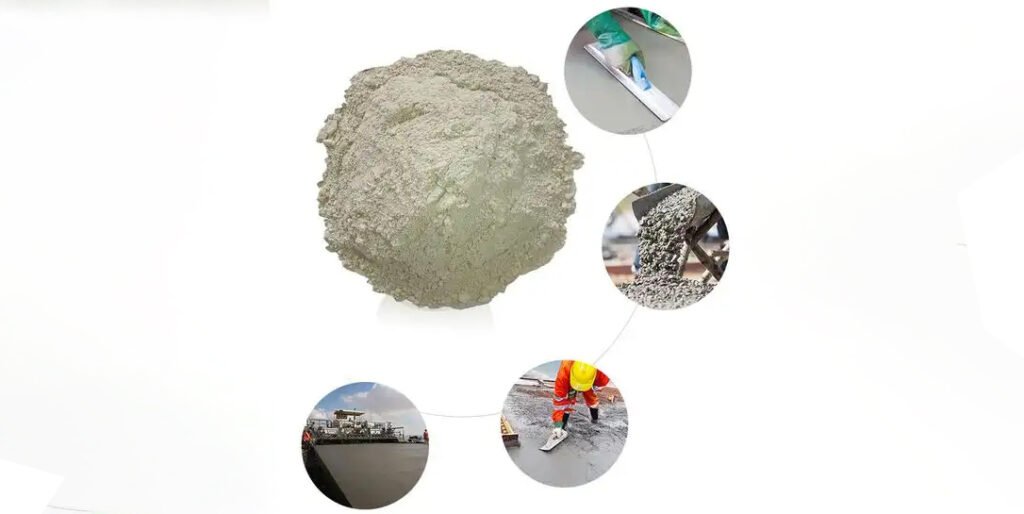
Cement concrete accelerating agents are mainly divided into two categories: accelerators and accelerating hardeners. Each accelerator has a different role in the cement concrete mixture, and the specific choice depends on the specific project requirements. Although both cement concrete accelerators and cement concrete hardener admixtures are designed to improve the early performance of cement concrete, they have different focuses. Cement concrete accelerators mainly act on the setting time of concrete. It helps the cement-water mixture to change from a plastic flow state to a hardened solid state more quickly. This significantly shortens the time required for initial setting and final setting. This is especially important in winter construction or occasions where rapid prototyping is required (such as winter road repairs), because it prevents the concrete from freezing due to a long setting time at low temperatures. Cement concrete hardener admixtures, on the other hand, focus more on improving the strength of concrete, just like an accelerator of concrete "growth", enhancing the early strength during the hardening process, so that the concrete can reach a higher bearing capacity in a shorter time.
Cement accelerator
Cement accelerators shorten the time it takes for concrete to change from a plastic (workable) state to a hardened state. They are very useful in cold weather applications or emergency repairs that require rapid setting. Here are some common cement accelerators:
- Calcium Chloride: Calcium chloride (CaCl₂) has long been one of the most commonly used accelerators due to its ability to promote rapid setting and early strength. An estimated 9 billion cubic yards of concrete are produced each year. It is the most consumed substance on Earth, second only to water. If the air temperature drops below 70 degrees Fahrenheit (about 21 degrees Celsius), the setting of ready-mixed concrete slows down. This effect is most significant in the range of 30 to 50 degrees Fahrenheit (about 1.7 to 10 degrees Celsius). Calcium chloride is used in cold weather ready-mixed concrete to improve this process. However, it can cause corrosion of reinforced concrete and is therefore generally avoided in structures containing rebar.
- Calcium Nitrate: This accelerator is the preferred alternative to calcium chloride due to its rapid setting properties without the risk of corrosion to reinforced concrete.
- Sodium Silicate: Sodium silicate is commonly used in sprayed concrete (shotcrete) as a rapid setting accelerator and can be used for rapid repairs in underground or wet conditions.
- Triethanolamine: An organic compound that prevents corrosion of rebar and improves early strength. Adsorbed on the surface of cement particles, changing their surface properties. However, it is dose-sensitive and excessive dose may slow down coagulation and has certain toxicity.
Cement hardening accelerator
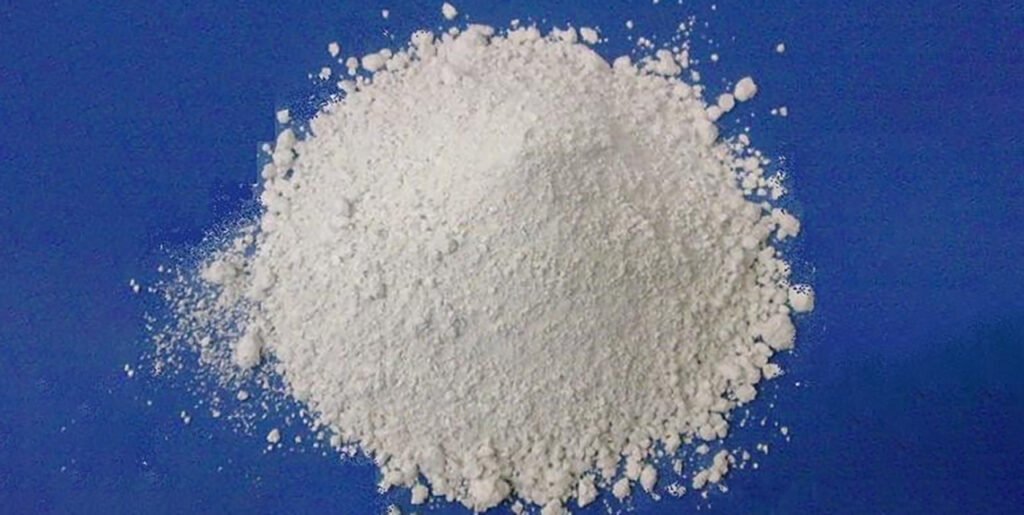
Hardening accelerators focus on increasing the growth rate of early strength without significantly affecting the initial setting time. They focus more on improving the strength of concrete, just like an accelerator of concrete "growth", enhancing the early strength during the hardening process, so that concrete can reach a higher bearing capacity in a shorter time. They are ideal for projects that require early bearing capacity but do not require rapid solidification. Here are some common cement hardening accelerators:
- Calcium Formate: Calcium formate is known for promoting early strength development and is a chloride-free accelerator that minimizes the risk of corrosion in reinforced structures.
- Silica-based Accelerators: These accelerators, such as nano-silica and colloidal silica, help improve early strength and are suitable for high-performance concrete applications.
- Alkaline Accelerators: Mainly used in shotcrete, these accelerators are very effective for improving early strength in shotcrete applications.
Application of cement concrete accelerator

Cement concrete accelerators are widely used, mainly in situations where rapid solidification or early strength improvement is required. Here are some common application scenarios:
Adapt to special construction environment
In cold regions or during winter construction, low temperatures can seriously slow down cement hydration, resulting in significantly longer setting time, slow strength growth, and even possible frost damage. Accelerators in concrete can promote low-temperature hydration, allowing concrete to solidify and harden normally even in cold environments. This reduces the adverse effects of low temperatures on concrete performance, ensures project quality, and speeds up construction progress.
Accelerate construction schedules
In road repair projects, quick-setting and hardening concrete can speed up road openings and minimize traffic disruptions. In high-rise building construction, faster concrete hardening can speed up formwork turnover, improve construction efficiency, and speed up project completion. Projects involving rapid repairs, such as highways, airport runways, and industrial facilities, often require concrete that can be put into use quickly. Cement accelerators can set quickly and load-bearing in advance, thereby reducing the turnaround time of these critical repairs.
Shotcrete Applications
Shotcrete, also known as sprayed concrete, is commonly used in tunneling, mining and slope stabilization. Accelerators are critical in shotcrete to ensure that the material adheres quickly to the surface, especially in elevated or vertical applications, where rapid setting prevents the concrete from sagging or dripping.
High-Strength High-Performance Concrete
High-performance concretes that require high early strength or low permeability are often better served by the use of accelerators. These concrete mixes are often used in demanding applications such as high-rise buildings, bridges and other critical infrastructure projects.
When should accelerators be used in cement concrete?
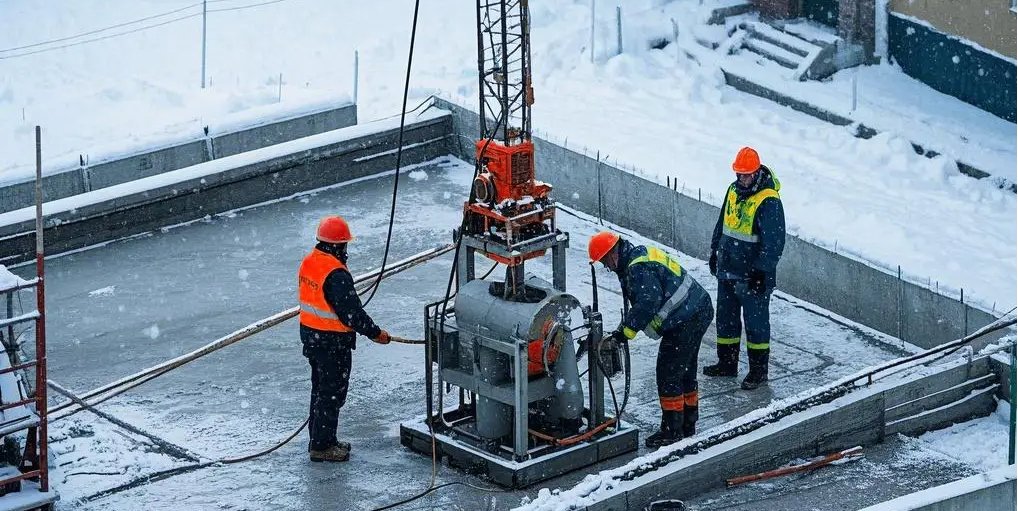
When to use accelerators
Concrete accelerators are commonly used in the following situations:
- Cold Conditions: In cold weather concrete placements, accelerators counteract the retarding effects of low temperatures, delaying setting and early strength gains.
- Expedited Project Schedules: When projects require rapid setting or early load bearing capacity, accelerators can speed up construction cycles.
- Shotcrete Applications: Accelerators are used in shotcrete to achieve rapid setting and prevent sagging on vertical or elevated surfaces.
- Precast Operations: Accelerators increase early strength, enabling rapid demoulding and efficient production in precast manufacturing.
How to use cement accelerator
- Mixing: Add accelerators during batching, ensuring thorough mixing and even distribution. Avoid adding accelerators directly to dry cement powder; always add them to water or fresh concrete.
- Order of addition: In some cases, accelerators should be added after other additives, such as plasticizers or retarders, to prevent any negative interactions. Always refer to the manufacturer's guidelines for specific order of addition recommendations.
- Compatibility: Some accelerators may interact with other admixtures, such as high-range water reducers, and thus have an adverse effect on the mix. Testing is recommended before large-scale use, especially when mixing multiple admixtures.
Typical dosage of cement concrete accelerator
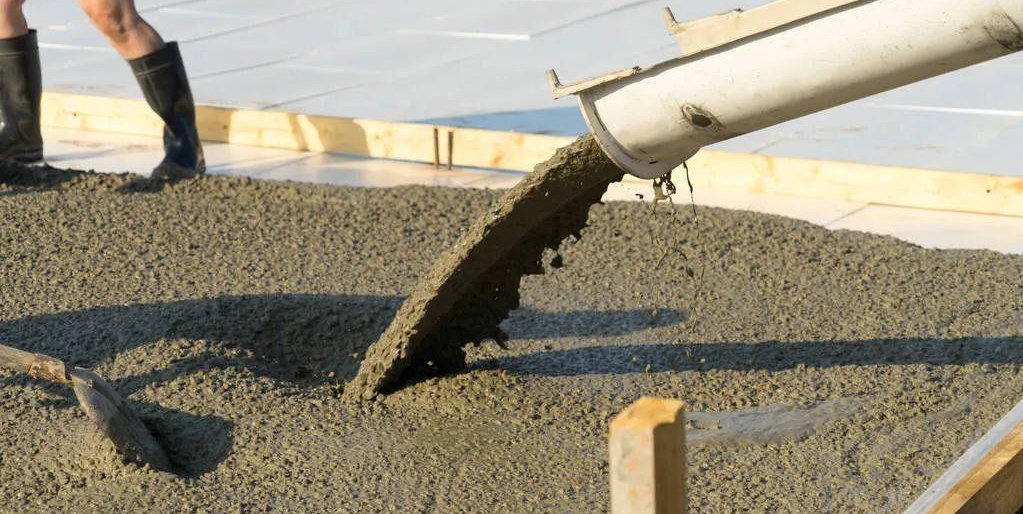
The amount of concrete accelerator used depends on factors such as the type of accelerator, ambient temperature, and the desired rate of solidification or strength growth. Here are some usage guidelines:
Calcium Chloride (CaCl₂)
- Dosage: Typically 1% to 2% by weight of cement. However, calcium chloride should not be used in amounts exceeding 2% as it may cause shrinkage, reduce durability, and promote corrosion of reinforcement.
- Application Considerations: Due to its potential to cause corrosion, calcium chloride should be limited to non-reinforced concrete applications unless special protective measures are taken.
Calcium Nitrate and Calcium Formate
- Dosage: Typically 0.5% to 2% of cement weight. These accelerators do not contain chlorides and are safer for reinforced concrete.
- Usage Notes: For best results, dosage should be carefully controlled according to specific manufacturer's recommendations and tested for compatibility with other admixtures.
Sodium silicate
- Dosage: 1% to 3% by weight of cement, typically used in shotcrete applications.
- Application Notes: Sodium silicate increases the viscosity of the mix and may result in reduced workability if used in excess.
Alkaline accelerator (special for shotcrete)
- Dosage: Dosage varies widely depending on the product and specific requirements of the shotcrete mix and is typically in the 2% to 6% range.
- Usage considerations: Care must be taken to balance setting time and workability, as high dosages can cause hardened concrete to become brittle.
Which cement concrete accelerator is best?
There is no concrete accelerator that is suitable for all situations, as different types of accelerators have their own advantages and disadvantages. The selection should be based on specific project requirements and conditions. The following is an analysis of the applicability of common accelerators in different situations.
| Type of Concrete Accelerator | Advantages | Applicable Scenarios | Disadvantages |
| Calcium Chloride | Significant acceleration effect, low cost, widely available | Plain concrete projects (non-reinforced), such as small building foundations | Strongly corrosive to steel, threatening the durability of reinforced concrete structures |
| Calcium Formate | Suitable for low temperatures, effectively enhances early strength, non-corrosive to steel, more environmentally friendly | Concrete projects requiring environmental protection or winter construction with steel reinforcement, such as winter roads and bridge works in northern regions | May require a higher dosage to achieve the same effect, relatively higher cost |
| Triethanolamine | Non-corrosive to steel, improves early cement strength | Concrete works demanding steel protection and early strength, such as important structures and hydraulic facilities | Dosage-sensitive; excessive use can delay setting and has some toxicity |
| Calcium Nitrite | Accelerates setting and hardening, rust-inhibiting properties reduce risk of steel corrosion | Reinforced structures in humid or corrosive environments, such as coastal buildings and bridges | Some toxicity; safety regulations must be followed during use |
| Compound Accelerators | Combines multiple benefits: shortens setting time, improves early strength, minimizes side effects, customizable formulations | Large-scale and complex projects with high concrete performance requirements, such as major hydraulic hubs and super high-rise buildings | Complex composition, relatively high cost |
Precautions when using cement concrete accelerator
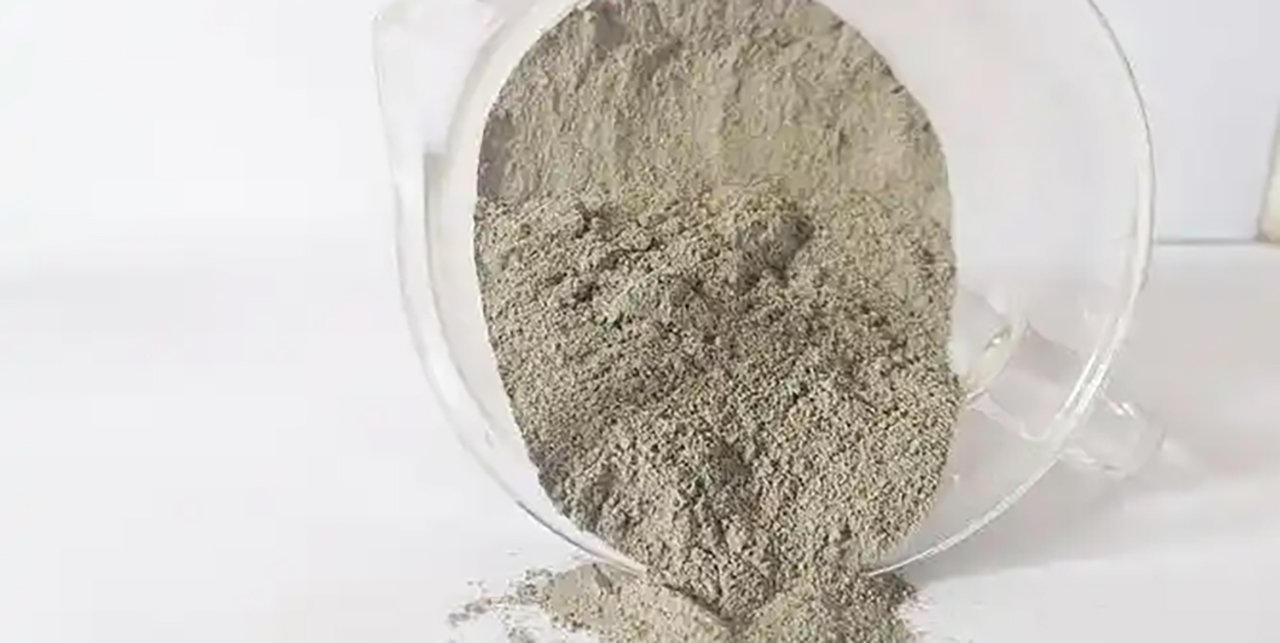
Effects on Long-term Durability
Accelerators, especially those containing calcium chloride, can impair the durability of concrete if used inappropriately. In reinforced structures, chlorine-containing accelerators can increase the risk of corrosion of the reinforcement, which can lead to cracking and spalling of the concrete. Chlorine-free accelerators, such as calcium nitrate, are recommended to avoid these problems.
Adjustments for Workability
Some accelerators may reduce the workability of the mix and require adjustments. High-range water reducers can be added to maintain the desired workability, but their compatibility with the accelerator must be tested.
Temperature Sensitivity
Accelerators work differently over different temperature ranges. Higher temperatures may enhance their effects, so the amount may need to be reduced in hot weather. Conversely, the amount may need to be increased in cold weather to achieve the desired effect.
Testing and Quality Control
As with any admixture, testing of concrete mixes with accelerators is critical. Through laboratory and field testing, engineers can fine-tune the mix to achieve the best balance between setting time, early strength growth, and workability. Quality control procedures should include slump, setting time and compressive strength testing.
Best Practices for Effective Use of Accelerators in Cement Concrete
To get the most out of accelerators in concrete, consider the following tips:
- Prepare in advance: Read the accelerator product manual carefully to understand its characteristics. Before using new cement or concrete accelerator, compatibility tests should be carried out to ensure that it is fully integrated with the concrete.
- Accurate dosage: Determine the optimal dosage through concrete mix tests and use high-precision equipment for accurate measurement. Avoid adjusting the dosage at will, as this may affect the performance of the concrete.
- Proper mixing: Mix liquid concrete accelerator with water, and solid accelerator should be mixed with part of the cement before adding the rest. Ensure sufficient mixing and extend the mixing time as needed.
- Monitor environmental conditions: Reduce the dosage in hot environments and increase the dosage in cold environments. Pay close attention to temperature and humidity. In humid environments, waterproof measures should be taken; in dry environments, ensure proper moisture retention.
- Quality control: During construction, test the concrete performance as needed and keep detailed records of the use of accelerators and concrete performance. This will help with future adjustments and traceability.
What are the frequently asked questions about accelerators in cement concrete?
Accelerators in cement are additives that can accelerate the setting and hardening process of cement. Common accelerators include aluminates, carbonates, etc. Sodium aluminate accelerator can make cement start to set within a few minutes, significantly shortening the initial and final setting time of cement. In shotcrete construction, it can make the concrete set quickly after being sprayed onto the working surface, reducing rebound and flow. Generally speaking, after using accelerators, the initial setting time of cement can be shortened to less than 5 minutes, and the final setting time can be controlled to about 10 minutes.
Accelerator is an admixture that can significantly improve the early strength development of concrete and is widely used in construction engineering and other fields. Adding 0.5% - 2% of chloride-based accelerator to concrete can increase the strength by 50% - 100% in one day, and the strength in three days can reach the level of 7 days or even higher when it is not added. It accelerates the hydration reaction of cement, promotes the hydration of cement mineral components, generates more hydration products, and makes concrete harden faster. In winter construction, accelerator can effectively prevent concrete from freezing, shortening the time required for concrete to reach critical strength after freezing from the conventional 7 - 10 days to 3 - 5 days; in emergency repair projects and prefabricated component production, it can also accelerate the progress of the project and improve construction efficiency and production benefits.
There are many ways to accelerate the setting and hardening of cement. From a chemical point of view, adding early strength agents such as triethanolamine (about 0.02% - 0.05% of the cement mass) and sodium sulfate (0.5% - 2%) can promote cement hydration reaction and significantly improve early strength; from a physical method, increasing the curing temperature (such as steam curing, the temperature is controlled at 40-80℃) and humidity can accelerate the cement hydration rate and make the strength develop faster; adjusting the mineral composition of cement and increasing the content of tricalcium aluminate (C₃A) and tricalcium silicate (C₃S) can also accelerate cement setting. C₃A reacts quickly in the early stage, and C₃S contributes significantly to the growth of strength. In addition, reducing the particle size of cement particles and increasing the specific surface area to 350-400㎡/kg can also accelerate the hydration rate and achieve accelerated hardening of cement.
Accelerators are often used in the following situations: when the ambient temperature is low (such as below 5°C), the hydration reaction of concrete is slow, and the use of accelerators can accelerate the setting and hardening speed and shorten the curing time. For example, in winter construction, adding 1% - 3% of the cement mass of chloride accelerators can significantly improve the early strength; when the construction period is tight, in order to speed up the construction progress, the accelerator can make the concrete reach 50% - 70% of the design strength within 48 - 72 hours to meet the subsequent construction requirements; in the production of prefabricated components, the use of accelerators can accelerate the turnover of formwork and improve production efficiency. However, it should be noted that excessive use of accelerators may lead to problems such as insufficient strength growth of concrete in the later stage and shrinkage cracking.
Chloride early strength agents such as calcium chloride have significant early strength effects. When the dosage is 1% - 2% of the cement mass, the strength can be increased by 50% - 100% in 1 - 3 days, but it will corrode the steel bars and is suitable for plain concrete; sulfate early strength agents (such as sodium sulfate) are added in an amount of about 0.5% - 2%, which can improve early and later strengths without the risk of steel bar corrosion, and are often used in reinforced concrete projects; triethanolamine composite early strength agents are usually added in an amount of 0.02% - 0.05%, which can work with other early strength components and can still effectively promote hydration at low temperatures, making them suitable for winter construction. In addition, organic early strength agents such as calcium formate, when added in an amount of 1% - 2%, can significantly improve early strength and are environmentally friendly.
Commonly used chloride early strength agents such as calcium chloride are added in an amount not exceeding 1% of the cement mass. Too high an amount will cause steel corrosion. Sulfate early strength agents (such as sodium sulfate) are usually added in an amount of 0.5% - 2% of the cement mass. Organic amine early strength agents (such as triethanolamine) are mostly added in an amount of 0.02% - 0.05% of the cement mass and are often used in combination with other early strength agents. In addition, for winter construction or special projects, the mix ratio can be optimized through experiments according to actual conditions to determine the precise amount of addition to balance the early strength effect and concrete durability.
The purpose of the accelerator is mainly to accelerate the setting and hardening process of cement. It is widely used in construction, especially in shotcrete and plugging projects. In shotcrete construction, the use of accelerators can make the concrete begin to set within a few minutes after spraying, which can effectively reduce the rebound and loss of concrete and improve construction efficiency. Generally speaking, after adding an appropriate amount of accelerator, the initial setting time of cement can be shortened to a few minutes to more than ten minutes, and the final setting time can also be controlled at about half an hour, which is significantly shorter than when no accelerator is added, thereby quickly improving the early strength of concrete and meeting the requirements of rapid construction and special working conditions.
There are many commonly used accelerators. The following are two of the more common ones.
Ferrous sulfate: In some chemical reactions, especially when redox reactions are involved, ferrous sulfate can be used as an accelerator. For example, in sewage treatment, it can accelerate the precipitation and removal of certain pollutants. The general dosage is about 5-10mg/L.
Triethanolamine: In the concrete industry, triethanolamine is a commonly used early strength agent that can accelerate the hydration reaction of cement and improve the early strength of concrete. The usual dosage in concrete is 0.03%-0.05% of the cement mass, which can increase the strength of concrete by about 20%-30% within 3-7 days.
Increasing the temperature can significantly accelerate the hydration reaction of cement. Generally, the reaction speed increases by about 1 to 1.5 times for every 10°C increase in temperature. The ambient temperature can be controlled at 40 to 60°C through steam curing, which can greatly shorten the curing time. Increase the humidity and keep the relative humidity above 90% to avoid excessive evaporation of water and ensure that the hydration reaction proceeds fully. The use of early strength agents can effectively accelerate curing. For example, the addition of triethanolamine early strength agent accounting for 1 to 3% of the cement mass can increase the strength of cement by about 50% in one day. Rapid hardening cement can also be used. Its mineral composition is special, and its 3-day compressive strength can reach 50 to 70% of the 28-day strength of ordinary cement, which can quickly achieve higher strength.
There are many ways to accelerate cement coagulation. In terms of chemical composition, increasing the content of tricalcium aluminate (C₃A) in cement can significantly accelerate coagulation by increasing its hydration rate. Generally, for every 1% increase in C₃A content, the initial setting time is shortened by about 5-10 minutes. Adding accelerators such as triethanolamine and calcium chloride, 0.05%-0.1% triethanolamine and 1%-2% calcium chloride can shorten the initial setting time by 30%-50%. In terms of temperature, for every 10°C increase in temperature, the cement hydration rate increases by about 20%-30%, but it should not exceed 60°C, otherwise it may affect the later strength. In addition, reducing the water-cement ratio, moderately reducing the conventional 0.45-0.6 water-cement ratio to 0.35-0.45, can accelerate water consumption and coagulation.
In the cement production line before the concrete solidifies, the following equipment is mainly used. In the raw material grinding stage, the vertical mill or ball mill grinds raw materials such as limestone and clay into raw materials. The vertical mill such as ZJTL2020C can produce 20-23t/h and has high grinding efficiency. In the raw material homogenization stage, air mixing storage and other equipment are often used to make the raw material composition uniform and stable. In the calcination process, the rotary kiln is the core equipment. It provides a high temperature of about 1450℃ through the combustion of coal and other fuels to calcine the raw material into cement clinker. For example, the φ4.8×74m rotary kiln has a high production capacity. When grinding cement, the ball mill is equipped with an efficient powder selector to grind the clinker into a finished cement with a specific surface area of 320-350m²/kg to meet the subsequent concrete production needs.
Conclusion
Concrete accelerators play a key role in improving construction efficiency, especially in cold weather or projects that require a quick turnaround. By understanding the types, applications, usage, and dosages of different accelerators, construction professionals can optimize concrete mixes to achieve rapid setting and early strength while maintaining durability. However, accelerators must be used with caution, paying attention to compatibility, dosage control, and safety procedures. When used correctly, concrete accelerators can be a valuable tool in modern construction, ensuring projects are completed on time without compromising quality.

